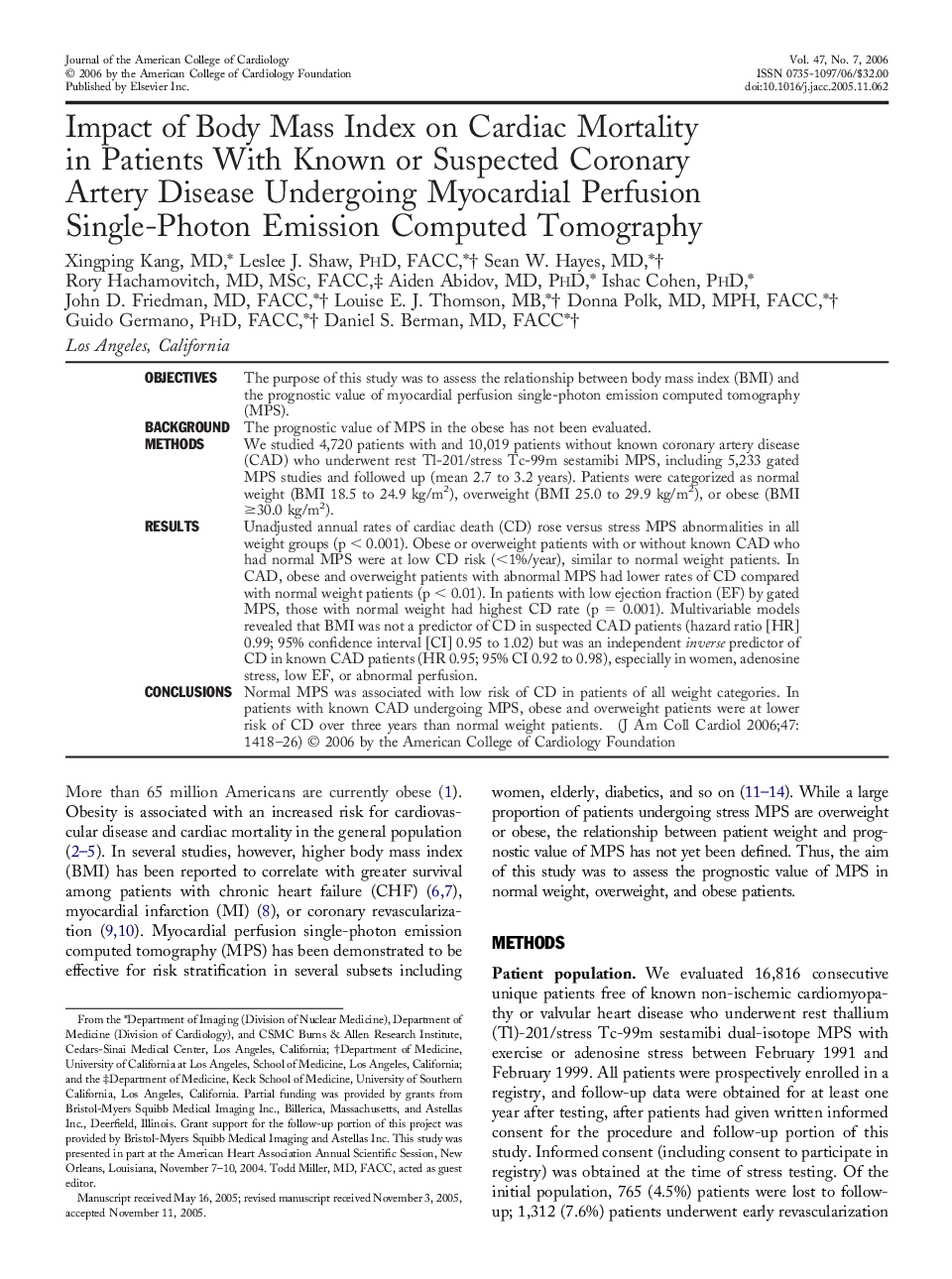| Article ID | Journal | Published Year | Pages | File Type |
|---|---|---|---|---|
| 2954116 | Journal of the American College of Cardiology | 2006 | 9 Pages |
ObjectivesThe purpose of this study was to assess the relationship between body mass index (BMI) and the prognostic value of myocardial perfusion single-photon emission computed tomography (MPS).BackgroundThe prognostic value of MPS in the obese has not been evaluated.MethodsWe studied 4,720 patients with and 10,019 patients without known coronary artery disease (CAD) who underwent rest Tl-201/stress Tc-99m sestamibi MPS, including 5,233 gated MPS studies and followed up (mean 2.7 to 3.2 years). Patients were categorized as normal weight (BMI 18.5 to 24.9 kg/m2), overweight (BMI 25.0 to 29.9 kg/m2), or obese (BMI ≥30.0 kg/m2).ResultsUnadjusted annual rates of cardiac death (CD) rose versus stress MPS abnormalities in all weight groups (p < 0.001). Obese or overweight patients with or without known CAD who had normal MPS were at low CD risk (<1%/year), similar to normal weight patients. In CAD, obese and overweight patients with abnormal MPS had lower rates of CD compared with normal weight patients (p < 0.01). In patients with low ejection fraction (EF) by gated MPS, those with normal weight had highest CD rate (p = 0.001). Multivariable models revealed that BMI was not a predictor of CD in suspected CAD patients (hazard ratio [HR] 0.99; 95% confidence interval [CI] 0.95 to 1.02) but was an independent inversepredictor of CD in known CAD patients (HR 0.95; 95% CI 0.92 to 0.98), especially in women, adenosine stress, low EF, or abnormal perfusion.ConclusionsNormal MPS was associated with low risk of CD in patients of all weight categories. In patients with known CAD undergoing MPS, obese and overweight patients were at lower risk of CD over three years than normal weight patients.
